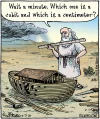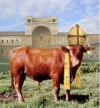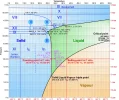I don't get it: Why don't we have common measurements? While the rest of the world is talking unified units, some places they measure all things outside the metric system.
Can't these countries please start measuring things in proper units (metric system), drive on the right side of the road, and respect the majority of the sane world?
This creates a lot of problems: how far is it from one village to the next, how much water do you need, how hot is it? I do not understand these measures, and I am in the vast majority of the world population. And still I have to translate our logical metric system to those who have no clue.
F.ex. Water freezes at 0 Celsius; 32 F. What is 32?
30F sounds hot to me. But it is 2 below the freezing point of water, so a little chilly... Snow in the air...
One km. is 1000 metres. 1 step is almost 1 metre. What could be difficult with that?
And how long is a foot? what is an inch? 2.54 cm. What does it MEAN? It is certainly within the metric system... What is an Oz???
In most countries, only drunk drivers drive on the left side of the road. In f.ex. England, I need a few pints before I can drive safely.
An expensive satellite was lost in a cooperation between USA and Europe because US course calculations were done in inches (!?) sic) instead of proper centrimetres, and the next course calculation done by the US went pretty wrong...
We have 10 fingers. 10 toes. the basics of the metric system. Please join us.
Please get it right, leftists...


























